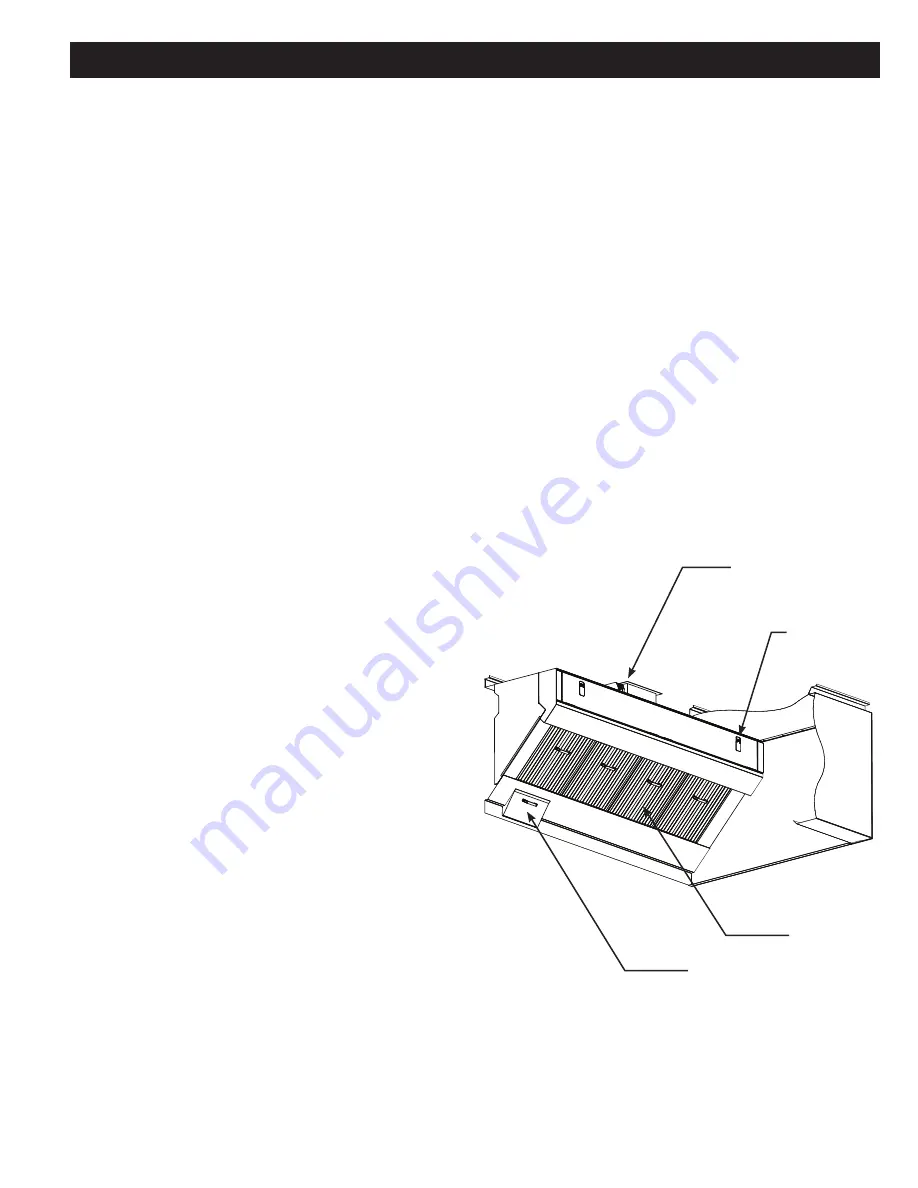
4
PRINCIPLES OF OPERATION
UV Lamps
Systems incorporating UV lamps will have the extra added
benefit of further break down of grease, in some cases down
to CO2, H20, and base minerals. The processes called
“Photolytic Oxidation”, and “Ozonolysis” are the drivers
behind keeping your ducts clean and free of containments
for much greater durations over conventional kitchen exhaust
systems not utilizing the UVC technology. The processes
break down, and condition grease dramatically reducing its
ability to burn or in some cases even combust. For proper
UV operation, the hoods must be maintained in good working
order. UV Lamps will accumulate a light gray dust on them
that will have to be periodically wiped off from below. Duct
work will have to be inspected in accordance with NFPA-96
or local guidelines, though frequency of duct cleanings will
be dramatically reduced.
Important Notice:
Never operate your Ventilator without
the XG Extractors in place. The XG extractors are UL 1046
Flame Exposure tested to protect you’re your system from
penetration of fire into the exhaust duct. The XG Extractor is
also a light attenuation barrier to remain in place at all times
during the use of your UV system.
Cleaning
At the end of each cooking day the fan is to be turned off and
the XG Extractors are to be safely removed from the hood
and cleaned. The
“XG” Extractors
can be washed either
in a dishwasher or soaked and rinsed off. The XG filter has
a unique dual hinge design that will allow the extractor to
be opened so its internal components are accessible for
cleaning. Periodic internal scrubbing of the extractors may
be necessary in lines servicing busy kitchens, or lines using
sugary sauces or bastings.
The
UV lamps
will develop a coating of dust, and sometimes
debris that will have to be periodically wiped away to
optimize the UVC Systems performance. The lamps should
be inspected weekly once the filters are removed. When
necessary, the lamps can be cleaned from below by carefully
wiping the bulbs with a wet cloth using some mild detergent.
A maintenance rotation should be initiated at the point of
start up by a Gaylord Industries certified Service Agent to
address any maintenance, or repair issues that may be
required.
Fire Protection
NFPA-96 Requires the use of Surface Fire Protection
(Duct, Plenum, Surface/Appliance)
on all hoods. It is these
systems that are the first line of defense against equipment
fires. Refer to the fire extinguishing systems owner’s manual
for operation and maintenance instruction of for these
systems.
The
XG-GFBD
Series ventilator incorporates a fire /
balancing damper in stalled in the duct collar to protect your
ducts, fans, and roof tops from the threat of fire in the event
your primary fire protection system fails to extinguish the fire.
In the event of a fire when the thermostat reaches its set
point of 325°F, the power to the hood will be cut allowing the
dual blade damper to spring shut sealing the duct entrance
and keeping the fire contained in the plenum, where it can
be properly managed. Exhaust dampers are an excellent
way to protect your roof top and un-maintained grease ducts
from the threat of fire.
The hood may also be supplied without a fire damper, which
would be designated by either the suffix
“ND”
or
GBD
in the
model number.
GBD
designates a balancing ONLY damper.
Refer to the nameplate on the hood for the exact model
number designation.
GFBD Damper
(Shown)
UV Access
(Keyed Latch)
XG Extractor
Grease Drawer
FIGURE 7
XG-UV-GFBD BDL
Summary of Contents for XG-BDL
Page 13: ...10 GFBD EXTERNAL WIRING MULTIPLE SECTION FIGURE 16B GFBD External Wiring Diagram ...
Page 29: ...26 UV HOOD WIRING BOARD SCHEMATIC ...
Page 30: ...27 WIRING DIAGRAM FOR MODEL CUV 100 WITH XG UV SERIES HOODS ...
Page 31: ...28 WIRING DIAGRAM FOR GAD 100 CONTROLLERS WITH GFBD DAMPERS ...
Page 32: ...29 WIRING DIAGRAM FOR GAD 100 CONTROLLERS WITH NO DAMPER ...








































